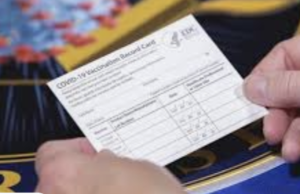Though a work in progress, Standards-based grading shows true measure of student learning
The controversy around standards-based grading has reached a fever pitch in the last few weeks. A petition signed by over 800 students calls for the removal of standard-based grading, arguing that the system leaves too much up to teacher discretion, causes confusion and solves a problem that wasn’t a problem in the first place.
Such aversion to change is a perfectly legitimate human reaction. After all, the shift in the direction of learning-based grading was a fairly drastic one, with the system being phased in over the course of this year’s senior class’s four years of high school. However, outright hostility toward the new grading system fails to acknowledge the nuances of standards-based grading—its strengths, its weaknesses and why the high school is moving in this direction.
Principal Jason Wedgbury and Josh Wilkinson, a CFHS math teacher, are supporters of standards-based grading.
Wedgbury explained the impetus behind implementing learning-based grading as one that was designed to combat problems that were seen occurring in the high school. “Learning-based grading is an attempt to remove a lot of behaviors from the grade. In other words, how you can perform on an assessment or an outcome or how you’re evaluated in your end learning should determine your grade. We’ve had some people in the past that did all of their homework and tried their very best, and they just weren’t understanding the material, but, because they worked hard, turned in everything, did everything right, got an A, but their learning wasn’t reflective of an A.”
This problem directly contrasted with another. He said, “You had some people that never did their homework and chose not to do a lot of it because they thought it wasn’t meaningful, but then would take an assessment and show a high level of mastery, and those students would be earning a B or a C.”
Essentially, they argue, learning-based grading is an attempt to reconcile the gap between student learning and student achievement. They believe that the system is well equipped to do just that, but they acknowledge that it is not without flaws, either.
Wilkinson said, “It’s not a perfect system. If there was a perfect system, we would just use that perfect system. It’s more about trying to make what we report more reflective of what kids know and what they don’t know.”
One such potential “flaw” mentioned by students is, according to Wedgbury and Wilkinson, not really a flaw at all. A major gripe of some students toward learning-based grading is the removal of grades like A- and B+. They argue that this shift means that little slip-ups on the part of a student have a far greater impact on a student’s GPA than they would in the past. Additionally, they argue, this removal of these smaller intervals means that final grades lack the nuance and precision that they used to provide.
Wedgbury argued that this shift is intentional. “I think we can be much more consistent about the four different places that people can go [A’s, B’s, C’s and D’s], I just think that sometimes we believe that we’re so accurate with our grades that we can sort them into 12 different places.”
Additionally, he said the move toward eliminating plusses and minuses has had no tangible negative effect. “We do not see cumulative GPAs going down right now as a result of reducing plusses and minuses.” This is because the downsides of cutting out plusses is often countered by the upside of canceling out minuses, balancing the two out.
Another area within the new system that remains controversial is the effect that the system has had on social studies and science classes. Some, like Wedgbury and Wilkinson, see the shift to skills-based grading from content-based grading as a positive shift that will allow for these classes to refocus on teaching students applicable skills.
Jeremiah Longnecker, chair of the social studies department, sees this somewhat differently. He said, “There are clearly skills that are necessary for social studies classes, but so much of what we do is vocabulary-based. [For example,] you can’t have a good idea of how government works if you don’t have some vocabulary. You need to know what Congress is, you need to understand the Supreme Court, etc. You need to know the content to be able to apply it. I think that might be where the system is ‘compromised.’”
In addition to concerns about the proper assessment of content-based curriculum, Longnecker said, “My individual concern is an incentive to remediate. When it was percentages, there was still room for remediation to get closer to 100 percent. As a result of the work we have done in PLC groups, I have become an enormous believer in the importance of remediation to students’ learning.”
The learning-based grading system is far from perfect, but to expect perfection from a new system is irresponsible and hasty. Ditching a brand-new grading system just because there have been a few bumps along the way is not the route that Cedar Falls schools need to take to ensure the best outcomes for students.
Instead, a careful, measured process of input and feedback in which compromises are made and arguments are fleshed out seems to be the best way for the system to be reformed, for students, administrators and teachers alike.









You must be logged in to post a comment Login